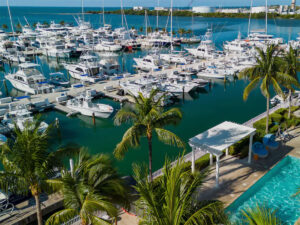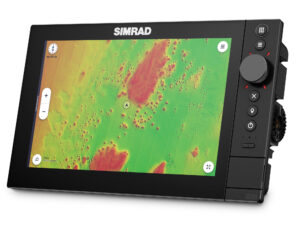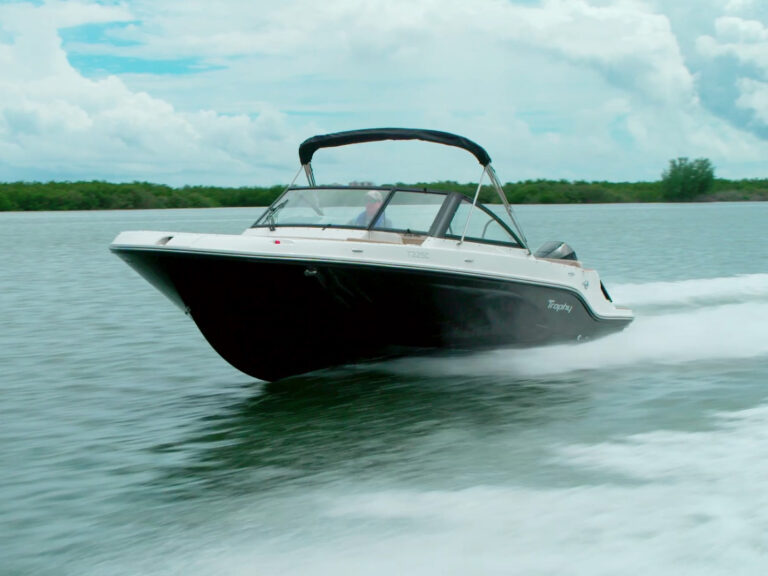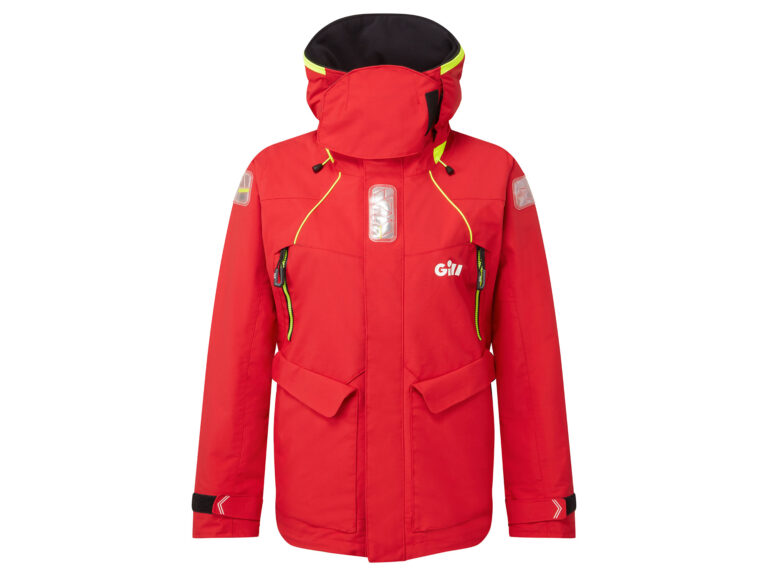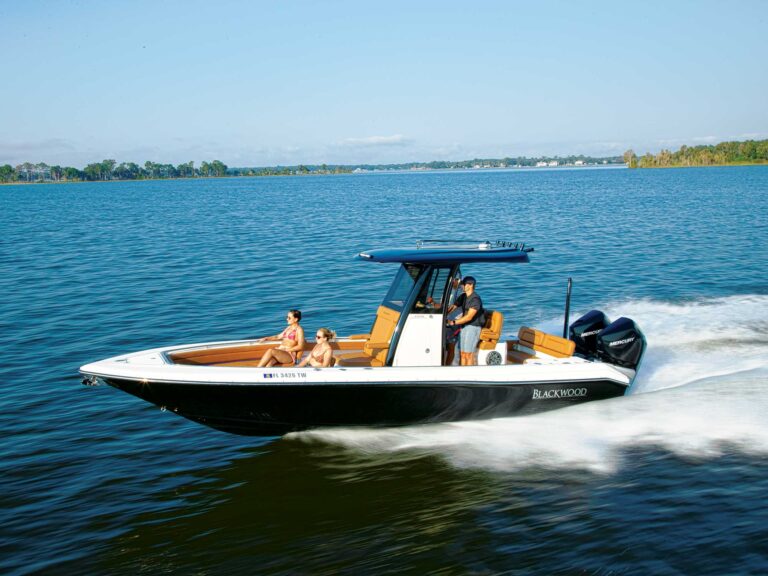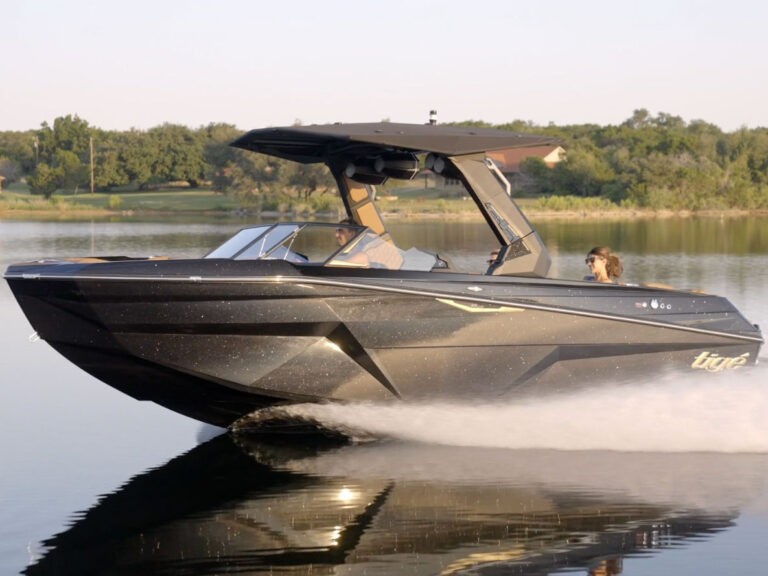Mercury Racing’s 300R outboard is now available with an Advanced Midsection (AMS) and an integrated rear tie-bar bracket, and boasts features of the 450R lauded by performance boaters. It is still available with a standard midsection and standard rear tie-bar bracket. Steve Miller, director of customer experience at Mercury Racing, filled me in on the latest during a demo event at which I also got to run the 300R in a variety of configurations, from twin installations on performance cats to quad center-console applications (the SeaVee 450Z we reviewed was one of the boats I ran) to a hopped-up bay-boat rig, complete with jack plates.
Some baseline specs are in order. The 300R is a 4.6-liter V-8 rated for a maximum rpm of 5,800 to 6,400, an expanded range for optimizing propping options and maximizing top speed. Its short-runner intake manifold and high-lift intake camshaft combine to produce quick acceleration. To squeeze more power from less fuel, naturally aspirated Mercury Racing V-8 outboards feature Advanced Range Optimization (ARO), a closed-loop fuel-control system that utilizes electronic sensors to precisely adjust the fuel mixture for the best-possible efficiency at all speeds. There are three gear-case options, applications for which are detailed below.
Pricing? There are more than two dozen iterations of this engine, depending upon gear-case rotation, shaft length, midsection, and whether you opt for the tie-bar bracket or not. The prices for the 300R range from $26,130 to $37,265.
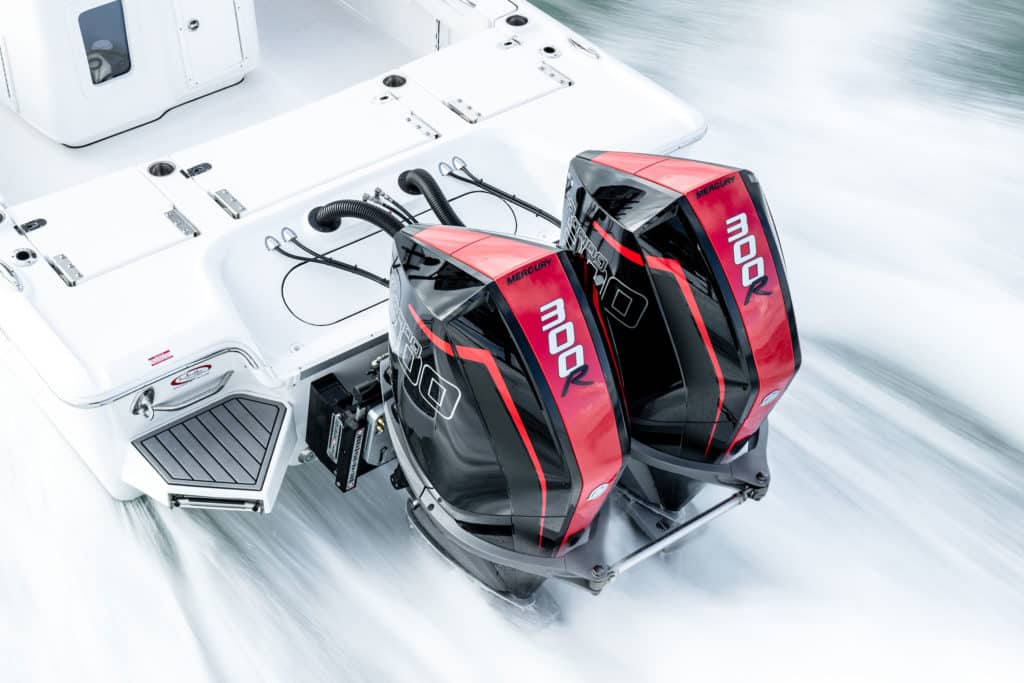
A bunch of the new features come as a result of the Advanced Midsection (AMS) that is now part of the 300R. The AMS affords 5 inches more setback, dampens vibration better and, in conjunction with the VesselView display system, gives you switchable exhaust; make your outboard sound sewing-machine quiet or activate the function and hear the throaty V-8 rumble and growl.
The integrated rear tie-bar bracket looks good and is built robustly. It goes way beyond any kind of bolt-on appearance. It is specifically aimed at owners of performance catamarans. Certain HD CMS models are available with the optional rear tie-bar mounting plates and side steering brackets for high-speed applications when using the Sport Master gear case.
Read Next: New Gear Ratio for Mercury Racing 300R
Boaters can also choose from two more midsection offerings from Mercury Racing: the Conventional Midsection (CMS) and the Heavy Duty (HD) CMS. The CMS comes with a 20-inch drive-shaft housing and the Torque Master gear case, and is targeted squarely at the tournament bass-boat segment. The HD CMS comes with solid engine mounts, forged transom brackets, and a single-stage trim pump that gets mounted inside the boat. The HD CMS gear-case version, according to Miller, is aimed at “single-engine ultra-fast performance boats, like single-engine catamarans or single-engine V-bottoms, where you are running well up into the 90s or even past 100 mph.”
In reviewing this 300R, it becomes apparent that Mercury Racing does not take a one-size-fits-all approach. “We are a custom builder, and the products we make are specifically designed to key in on certain boat applications,” Miller declares. If outboard performance powers your boating passion, check out Mercury Racing’s 300R.

